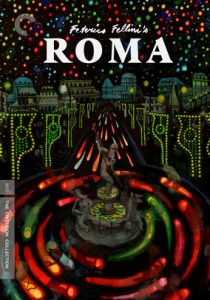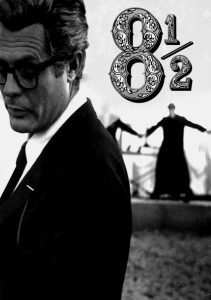Fellini’s Roma-1972
Director Federico Fellini
Starring Britta Barnes, Peter Gonzales
Top 250 Films #122
Scott’s Review #649
Reviewed June 5, 2017
Grade: A-
Fellini’s Roma (1973) is a trippy experience through Rome during two different periods
As with all Fellini films, the film is meant to be experienced rather than analyzed.
One must nestle into the life that Fellini offers on-screen- in this instance the fabulous city of Rome, Italy in both positives and negatives.
The experience was very good for me, as both a world of odd characters and of ancient Rome oozed from the screen appealingly and absurdly.
From a plot narrative- there is a rot one. Arguably the only character portrayed is Rome herself. The film takes place in both the 1930s as well as the 1970s and is said to be an autobiographical tale of director Fellini’s experiences growing up in Rome.
We see little Fellini as a youngster, experiencing the vast city for the first time, and as a teenager now living in the city. Interestingly, the film traverses from both sets of periods back and forth with really no rhyme or reason.
Throughout the film, we see both the beauty and the ugliness of Rome- the majestic Colosseum and the dirty entrails of the gloomy city. Scenes of seedy brothels, mainly in the 1930s, and a myriad of strange and scantily clad females prance before the cameras looking for a lucky score amid the droves of men lusting after them.
Another depicts a fashion show, of sorts, taking place at the Vatican, involving nuns and priests in bizarre costumes.
The 1930’s setting is my personal favorite. Gritty, cold, and harsh, the bleakness of Rome is depicted. Unsurprisingly, this has much to do with the historical period Since Mussolini was in power, and on the eve of World War II, the darkness was apparent.
In a frightening scene, bomb sirens wail while a woman shrieks in panic. The brothel scenes are downright creepy and the subsequent theatre scenes involving drunken, rowdy, young men leering and cursing at the entertainment, is a particular slice of a life sequence.
In contrast, the 1970s sequences are layered with more beautiful depictions of the city. Brighter colors are featured, and there appear to be either scientists or explorers digging into ancient ruins and finding gorgeous art that is subsequently ruined by the blowing air. We also see hippy types basking in the sunlight.
Again, much of this film is largely open to interpretation.
I adore Fellini’s Roma in terms of an expression of the city of Rome as an art form, but the film is highly unconventional- another plus for me.
Sure, I may have desired to learn more about the bevy of creepy and potentially interesting characters, but I finished the film with an appreciation of Rome, unlike none I have ever known.
A startling final scene, in which legendary Italian film star, Anna Magnani, appears scantily clad, implied to be a prostitute, was filmed shortly before her untimely death at the age of sixty-five.
As a film, Fellini’s Roma is a wonderful history lesson, but also a lesson in interpretation and film appreciation. Most filmgoers are accustomed to a beginning, middle, and end, as well as some semblance of a plot.
Roma contains none of that, but rather, is mind-opening and still fresh many years after its release, which is a true testament.

